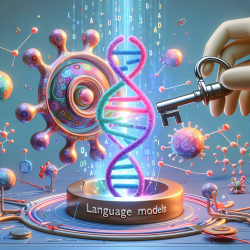As practitioners in the field of special education, we are always on the lookout for new research and strategies to improve our services. One valuable resource that stands out is the book Behavior Belongs in the Brain: Neurobehavioral Syndromes (1997) edited by Pasquale J. Accardo, Bruce K. Shapiro, and Arnold J. Capute. This compilation of papers provides a wealth of scientific information and recommendations for clinicians and educators working with children who have developmental disabilities. Let's dive into some key takeaways and practical tips from this book that can help you enhance your practice.
Understanding the Brain-Behavior Connection
The book emphasizes the intricate relationship between the brain and behavior, especially in children with neurodevelopmental disabilities. It covers a broad range of topics including:
- Brain disease and learning disability
- Minimal brain dysfunction
- The neuropathology of autism
- The impact of prenatal exposure to toxins
- Intrauterine infections
Understanding these connections can help practitioners better diagnose and develop effective intervention strategies.
Educational Strategies for Neurobehavioral Dysfunction
One of the book's highlights is its practical strategies for educators working with children who have neurobehavioral dysfunction. Here are some actionable tips:
- Early Intervention: Start intervention programs as early as possible to maximize developmental outcomes.
- Individualized Education Plans (IEPs): Tailor educational plans to meet the specific needs of each child, considering their unique neurobehavioral profile.
- Social Considerations: Address social skills and peer interactions as part of the educational program.
- Continuous Monitoring: Regularly assess and adjust educational strategies to ensure they remain effective.
Autism and Pervasive Developmental Disorders (PDD)
The book provides a thorough review of autism and PDD, discussing diagnostic criteria, neurological examinations, and treatments. For practitioners, understanding these disorders from a neurological perspective can significantly enhance diagnostic accuracy and treatment efficacy.
Communication in Autistic Children
Chapters dedicated to communication deficits in autistic children are particularly useful for speech-language pathologists. The book delves into:
- Pragmatic, prosodic, and semantic deficits
- Phonologic and syntactic disorders
- Neurological bases and interventions
This detailed analysis can help practitioners develop more effective communication strategies tailored to the needs of autistic children.
Fetal Influences and Neurodevelopment
The book also explores the impact of prenatal exposure to various substances on neurodevelopment. Key topics include:
- Drug use during pregnancy
- Effects of cigarette smoking, alcohol, marijuana, opiates, and cocaine
- Confounding variables such as systemic infections and maternal nutrition
Understanding these factors can help practitioners better assess and address developmental issues in children exposed to these substances prenatally.
Implementing the Research in Your Practice
Here are some steps you can take to incorporate the insights from this book into your practice:
- Stay Informed: Keep up with the latest research in neurobehavioral syndromes to continually improve your understanding and approach.
- Collaborate: Work with other professionals, including neurologists, psychologists, and educators, to develop comprehensive care plans for your clients.
- Customize Interventions: Use the detailed information from the book to tailor your interventions to the specific needs of each child.
- Educate Parents: Share your knowledge with parents to help them understand their child's condition and how they can support their development.
To read the original research paper, please follow this link: Behavior Belongs in the Brain: Neurobehavioral Syndromes (1997).










